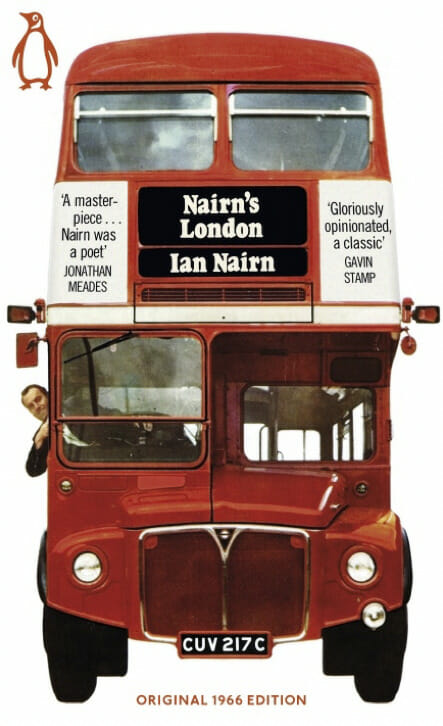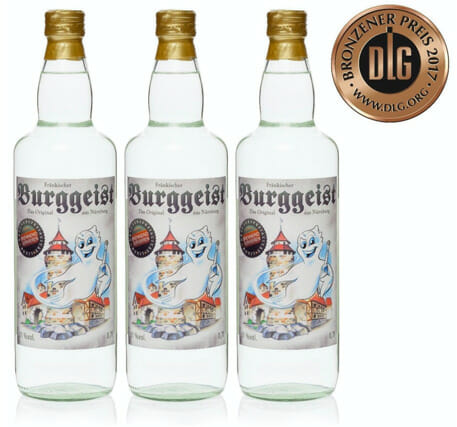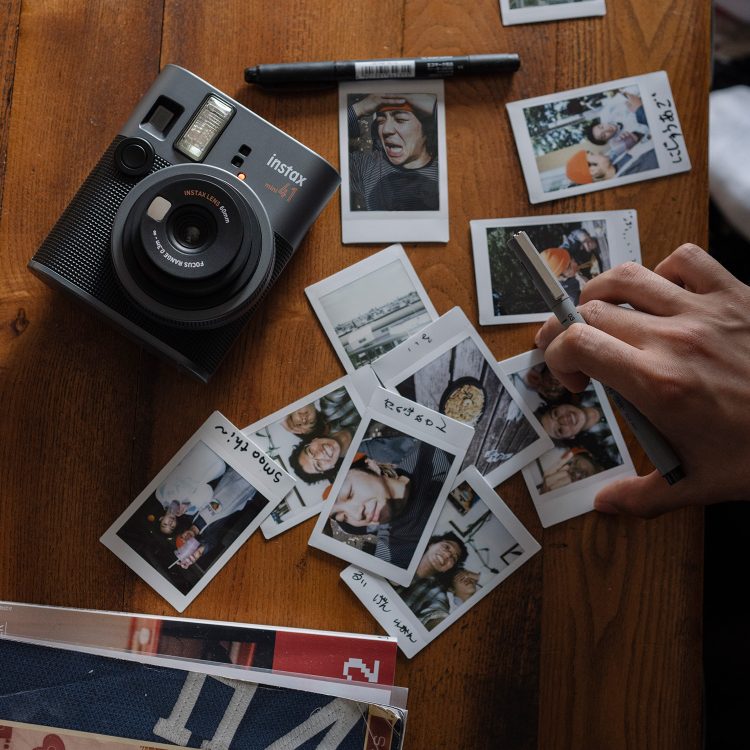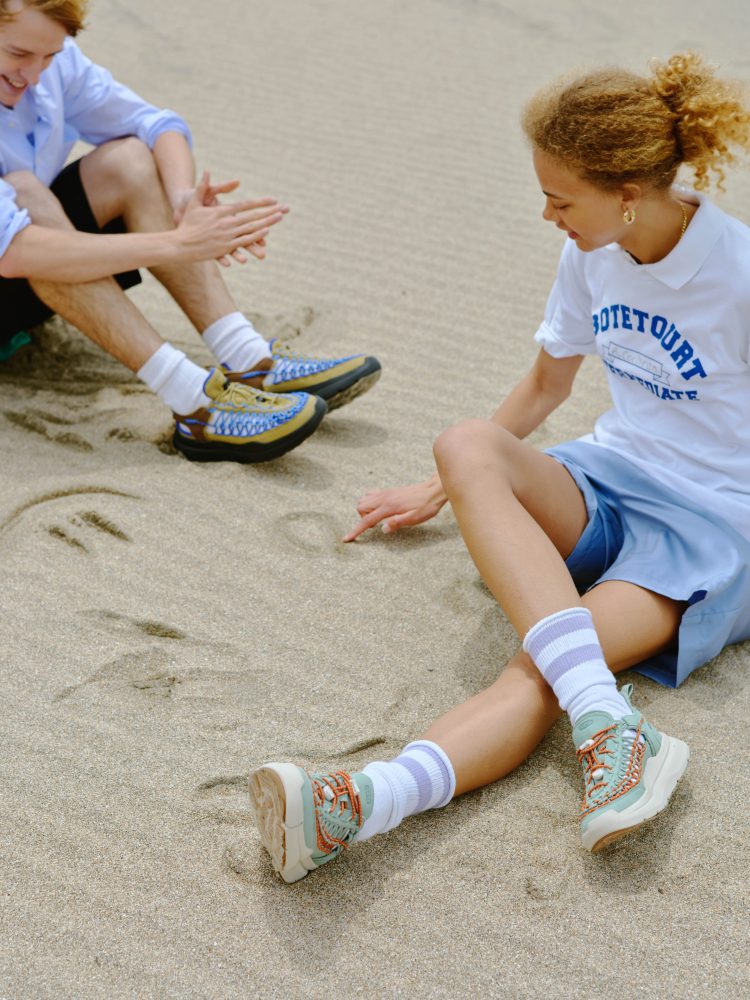ファッション
【#2】 「シャツの店 – Syatsu No Mise」
2021年3月15日
text :Toby Feltwell
数ヶ月前、1986年の初めに最初に放送された6部構成のNHKドラマシリーズ「シャツの店」の再放送を観ました。素晴らしいキャストによる素晴らしいパフォーマンス、微妙な多層スクリプト、良い作品です。まさにもう作られることのない偉大なリアリストドラマです。どう視聴ができるのかはわかりませんが、機会があれば観てみることをお勧めします。シャツ職人の店を中心とした家族と世代間における葛藤の物語であり、1980年代の東京の変化する社会に関連する多くのテーマを扱っています。シャツ作りそのものは、純粋に物語の背景として扱われるのではなく、クローズビジネスに携わる私にとっても魅力的でした。
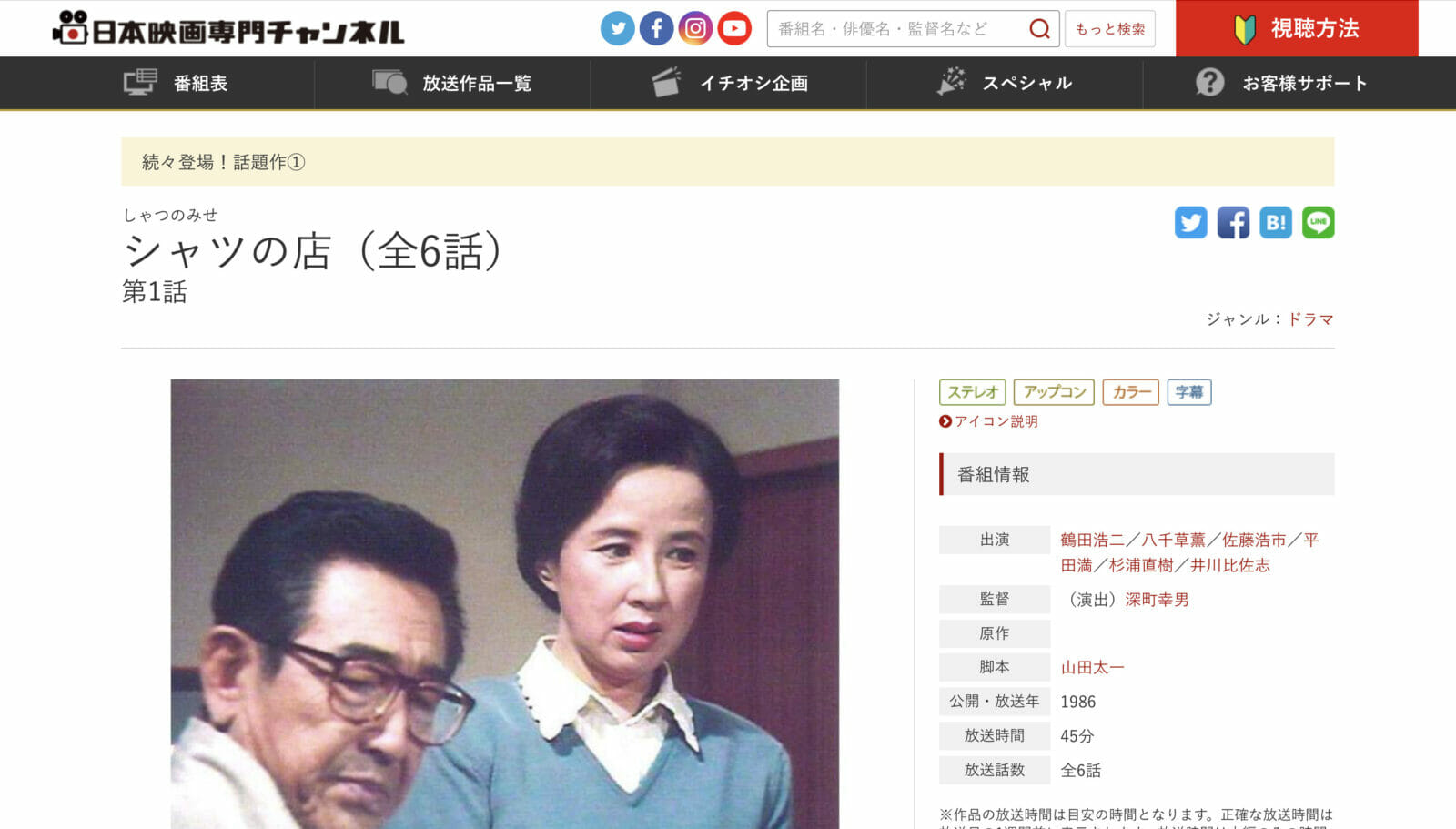
オーダーメイドのシャツは、このドラマにおいて(消滅したシステムで)完璧に時代遅れの製品として取り扱われます。若い世代の人たちが職人の厳しい生活を送ることに消極的であるのもその理由の一つですが、需要の消失もあります。大量生産で十分に良いシャツをはるかに安く効率的に生産できる場合、ハンドメイドの製品を選ぶことは贅沢なだけでなくひねくれているように思えます。しかし、(1986年に比べ2021年においてはさらにそうですが)一般的に受け入れられているドレスコードをサポートしなくなった世界で、そしてTシャツ(理想的な工業製品)が利用可能になったときに、ワイシャツは何のために存在するのでしょうか?シャツはスーツと一緒に着用することで一種のユニフォームの一部になり、それ以外の場合は「頑張ってる」様を意味します。「フォーマル」の本質が消え、ただそのアイデアにアピールします。当然のことながら、番組に出て来るショップ、シャツメーカー、そして彼のシャツは、ドラマが探求する他の選択肢よりもはるかにクールです。多層スクリプトです!
ただし、形式の機能低下は明らかです。私が広告宣伝車両から学んだことですが、ホストでさえ今はフーディーで仕事に行くことができます。ネクタイはオプションで非常にエキゾチックなものになっています。
私は、ネクタイなしにスーツを着ている人にはがっかりしてしまいます。スーツの体制に服従しつつも、その基本の一つである(そして最も無視できる)ルールを無視するのは偽の反乱です。とても悲しいジェスチャーのようです。
また、ネクタイはボタンを隠します。
今、ネクタイのことを考えていると、私にとって最も魅力的な機能のように思えます。
私がボタンに対する問題があることを今ここで告白しなければなりません。私がKoumpounophobiaかどうかはわかりません。しかし、ボタンの形状には特別な何かを感じます。大きな円の中にある4つの円が正方形を形成していることに対し、不合理な嫌悪感が生じます。
つまり、どうやら「スティーブ・ジョブズのボタン恐怖症は現代の世界を形作った」らしいです。
私にとってボタンは奇妙な…、正確には恐れではなく…、弱さ(特に衣服に携わる人にとって!)です。しかし私は元来ミニマリストで、それによってミニマリストになったのではありません。ただし、C.Eには、ボタンをカバーもしくは隠した洋服がたくさんあります。
正直に言うと「ボタン」という言葉をあまり書きたくありません。
しかし、私はボタンに関わる仕事をすることによって、以前に比べまだ自然になりました。不必要なボタン(ボタンダウンカラーなど)、装飾的な機能としてのボタンはさらに、私が避けたいものです。たとえば、スーツのジャケットに袖口のボタンがなくても大丈夫なのでしょうか。そのようなことを考える自分は明らかに狂気の沙汰としか思えません!古くからの伝統に準拠していれば、機能しないボタンでも許容することができます。
ボタン恐怖症について5分間読んだので、それが幼少期のトラウマに関連することを理解しています。唯一思い当たるのは、幼い頃の小間物屋さんでの記憶です。母がドレス作りのために手芸材料を買っていたのですが、そこには透明な円筒形の容器に入った恐ろしいボタンの展示があり、それぞれのふたにはサンプルボタンが接着されていました。これは70年代の終わりに間違いありません。ボタンデザインの気まぐれな世界の拡張された70年代のファッションの極端で、素朴で、杜撰な品質を想像してみてください。純粋なホラーです! 1976年にイギリスにおいてテントウムシの大量発生がありました。その記憶と私の心の中に埋もれているテントウムシ形ボタン(恐らくそのような物があったはず)とが混同してしまっているのかもしれません。
また、自家製服の象徴としてのボタンが私に嫌悪感を抱かせた可能性もあると思います。私が欲しかったものは、金型から作られる光り輝く完全なコピー品でした。当時の友達全員と同じように、私は工業的な大量生産のアウトプットを切望し、ハンドメイドのものは何でも嫌いでした。スターウォーズのおもちゃに人の努力した痕跡がないことは非常に重要でした。自分の手でなにかを作ろうとするのは間違ったことでした。
「シャツは何のためにあるのか」という質問に対する別の答えが提示されます。ある程度のスキルとノウハウを持っている人が一人で一般的な素材から製作ができる便利な衣服です。 Tシャツに関しては同じ様に言えません、その性質そのものが工業的です。
巨大な産業機器なしで人がスキルを用いて民生品を作ることが可能だという考えは変です。これらのすべてを意味のあるものにするために、私たちは非人格的な産業がもたらす成果を切望しなければなりません。たぶん、綿織物は世界で初めて望まれたコンシューマー向けの工業製品でした。帝国主義、産業革命、奴隷制はすべて、その発展に不可欠でした。その後衣服製造産業は繊維製造産業の後に始まり、現代の状況にあります。しかしそこからさらに先へ進み、製造した衣料品をオンラインで独占的に販売できます。人間の介入は必要ありません!配達ドライバーと熟練の縫製機械工は(私たちの物への欲求に単に付帯して)今では不可視です。発展の各段階で、私たちと製品との間にいる人々はさらにバックグラウンドへと後退します。
上記のとりとめのないこととは別に、「シャツの店」に触発されてとったアクションは、シャツメーカーを見つけトライアルとしてシャツ(ボタン付き)を注文したことでした。どう仕上がるかが楽しみです。
A couple of months ago I saw a re-run of the 6 part NHK drama series Shyatsu No Mise which was originally broadcast at the start of 1986. It’s great: fantastic performances by a great cast, subtle multi-layered script – exactly the kind of great realist, ‘slice of life’ drama that doesn’t get made anymore, it seems. I’m not sure how readers might be able to see it, but I recommend it if you get the chance. It’s a story of family and inter-generational conflict centered on an artisan shirtmaker’s shop and it deals with a lot of pertinent themes to the changing society of 1980’s Tokyo. Shirt-making itself is not purely treated as background but is handled with understanding – that made it appeal to me particularly – as someone who works in the clothing business.
Order-made shirts are a perfectly out-of-date product (of a disappearing system) for the purposes of this drama. The younger generation’s reluctance to take on the tough life of an artisan is one side of it, but there is also the disappearance of demand. When mass production can produce perfectly good shirts far more cheaply and efficiently, choosing to have a hand-made product instead seems perverse as well as extravagant. But, also (and this is more the case in 2021 than 1986), in a world which no longer supports generally accepted dress-codes, when t-shirts (the ideal industrial clothing product) are available – what are these kinds of shirts for? Shirts are part of a kind of uniform when worn with a suit and otherwise signify ‘making an effort’ – appealing to an idea of formality even as its substance has vanished. Naturally, the shop, shirtmaker and his shirts are also much cooler than the alternatives the drama explores – as I mentioned; it’s a multi layered script.
The diminished function of formality is clear, though. Based on what I learn from advertising trucks, even hosts can go to work in hoodies now. Ties have become something optional and quite exotic.
I am disappointed by people who wear a suit without a tie. It seems such a sad gesture to submit to the regime of the suit and then flout one of its basic (and most floutable) rules – a fake rebellion.
Also, ties cover up buttons.
Now I come to think about it, that may be their most attractive function to me.
I now have to confess that I have a problem with buttons. I can’t say if it is technically Koumpounophobia; but there is something particular about the shape of buttons: 4 circles forming a square within a larger circle, that causes an irrational dislike.
So, apparently: ‘Steve Jobs’s button phobia has shaped the modern world’.
But I’m not trying to pretend this weird… not exactly fear… weakness (especially for someone who works in clothing!) somehow makes me a natural minimalist or what have you. C.E clothes do feature lots of covered/concealed buttons, though.
I don’t enjoy writing the word ‘buttons’ actually.
But I have grown more comfortable with them the more I have worked with them. Unnecessary buttons (eg: button down collars) or, worse, buttons as a decorative feature are things I would rather avoid. I wonder, for example, if it would be Ok for a suit jacket not to have cuff buttons. Even though that’s clearly madness! I can live with non-functional buttons if they are conforming to some long-established tradition.
Having now spent 5 minutes reading about button-phobia, I understand that I am supposed to associate it with a childhood trauma. The only thing I can think of is a memory of a haberdashery shop when I was very little. My mum was buying dress-making stuff and there was a horrific display of buttons in clear cylindrical containers – a sample button glued on the lid of each. This is no doubt at the end of the 70’s. Just picture the extreme, naïve, knock-about quality of 70’s fashion extended to the whimsical world of button design: pure horror! It may be that there is some confusion in my mind of ladybird shaped buttons (there must have been some in this memory) with buried memories of the ladybird plague of 1976.
I also think it’s possible that buttons revolted me then as a symbol of home-made clothes. The things I wanted came shining and perfectly identical from steel molds. Like all of my friends then, I coveted the output of industrial mass production and hated anything hand made. The lack of any sign of human effort in Star Wars toys was crucial to their appeal. Trying to make something yourself was just wrong.
An alternative answer to the question, ‘what is a shirt for?’ presents itself: it’s a useful garment that can be made from general materials by one person provided the skill and know-how. A T-shirt can’t really – its very nature is industrial.
The idea of a person being able to make a consumer product through skill and without a huge industrial apparatus is odd. We have to desire the output of faceless industry to make this all make sense. Maybe woven cotton fabric was the first globally desired industrial consumer product. Imperialism, the industrial revolution and slavery all crucial to its development. Industrial garment production then comes to step in after industrial textile production and we have the situation of the modern world, except we can go further and have our industrial clothing products sold exclusively online: no human interaction required! The delivery driver and the skilled machinist are now invisible, incidental to our desire for stuff. At each stage of development, the people between us and the product recede further into the background.
Apart from the above ramblings, the action inspired by Shyatsu No Mise was that I found a shirt maker and ordered a shirt (with buttons) as a trial run. I’m looking forward to seeing how it turns out.
プロフィール
トビー・フェルトウェル

